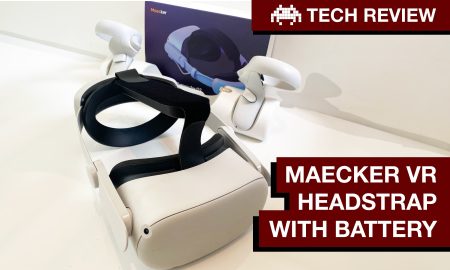

Virtual reality (VR) has been touted as the future of entertainment and technology for decades. However, many are beginning to question whether VR has lost its momentum and is now in a state of decline. The answer is not a simple yes or no. While VR may be experiencing a lull in its growth, it is by no means dead. To understand this better, let’s explore the current state of VR and what the future may hold for this technology.
What is Third Wave VR?
Before we dive into the current state of VR, it’s essential to understand the concept of third wave VR—that is, the cycle of VR technology that we are currently in. Third wave VR started back in the early 2010s with the release of the Oculus developer’s kit, among other things, and continues until today (provided you’re reading this from the early 2020s). During this wave of VR the focus has been on creating immersive and interactive experiences that include both gaming and entertainment and (very importantly) other applications outside entertainment. These other applications include education, healthcare, and even business.
How Meta Changed the Game with Cheap VR Headsets
While the third wave started with Oculus , it was pushed into the forefront of culture my Meta, who acquired Oculus in 2014. One of the most significant developments in the VR industry in recent years was Meta’s release of cheap VR headsets. Priced at $299, the company’s Oculus Quest 2 made VR accessible to a wider audience than ever before. This has helped drive growth in the industry by immersing many people in VR experiences for the first time, and breeding a new generation of VR enthusiasts and developers.
It also spurred the development and porting of many landmark VR games. Be that the release of Half-Life: Alyx or the porting of huge titles such as Minecraft. Speaking of which, if you want to buy Minecraft Coins at a discount, you can do exactly that with Eldorado.gg.
The Metaverse Was Overhyped
The metaverse was originally coined by science fiction author Neal Stephenson, but (again) it was Meta who made it a household word today. In short, the idea of the metaverse refers to a virtual world where users can interact with each other in an interconnected shared space. However, Meta pushed too hard and quickly corporatized the idea of the metaverse. This has led to many users, enthusiasts and experts to now believe that the hype surrounding the metaverse was overblown, and its potential may have been overstated… At least with current technological constraints.
COVID’s Economic Fallout Disrupted VR and Most Industries
While the pandemic saw many people try VR for the first time, the fallout of the COVID-19 pandemic had a significant impact on the VR industry, as it did on many other sectors of the economy. The economic fallout from the pandemic, alongside other factors such as the global easing of stay-at-home measures led to a reduced interest in the metaverse and VR. This, in turn, led to layoffs and a slowdown in VR development, with many companies cutting back on their VR projects. Meta itself announced in December 2021 that it would be laying off hundreds of employees, with the company’s VR division taking a significant hit.
Previous Cycles of VR
While this all sounds like bad news for VR as a whole, this is not the first time VR has experienced a lull in growth. The industry has gone through two previous cycles of hype and decline, with the first wave in the 1990s and the second wave in the mid-2000s. The 1990s push for VR is remembered lovingly by many as the time the iconic company Nintendo tried to enter the VR market with the Virtual Boy, which was a commercial failure due to issues with its display technology.
A continuing trend across VR cycles, thus far, has been technological restrains. Namely, VR technologies being underdeveloped on release or not being able to keep up with user demands, leading to inevitable loss of interest.
While the previous two cycles were hindered by underwhelming realisations of virtual reality, this time many would argue that the issue lies more in the availability of software worth using. As any VR user will tell you, VR simply doesn’t have that many quality applications to compete with other formats; at least not yet.
Companies Are Still Creating for VR, and It Is Being Applied More Than Ever
Fortunately, many are working on overcoming this software hurdle. Despite the challenges facing the VR industry, companies are still heavily investing in its development. On the face of it, many companies are developing VR games and applications, with the market projected to reach $22.9 billion by 2025, according to a report by Research and Markets. Not only that, but VR is being applied in new and innovative ways, from training programs for pilots and surgeons to immersive experiences for art exhibitions and museum displays.
This Lull in the Market Is Good for the Long-Term Health of the VR Industry
While the current state of the VR industry may seem bleak, it’s important to remember that this lull in growth may be necessary for the long-term health of the industry. The hype surrounding VR and the metaverse has led to unrealistic expectations, and the slowdown in growth could allow for a more measured and sustainable approach to VR development. This can also help to weed out those looking for the next big business venture while truly passionate developers will stick around and continue their work.
Additionally, as hardware continues to improve, VR experiences will become more realistic, immersive and multifaceted, making the industry more attractive to a wider audience.
This, while VR may be experiencing a lull, it is far from being dead. The industry is still developing new hardware and software, even if the media buzz is not shouting about every new advancement. Third wave VR has certainly been a wild ride, from the emergence of cheap VR headsets to the release of some of the best VR applications to date. It is unclear whether this cycle of VR is coming to an end. But, either way, the continuing development of VR hardware and software suggest that the industry is far from over. Meaning that, overall, the future of VR still looks bright.




































You must be logged in to post a comment Login